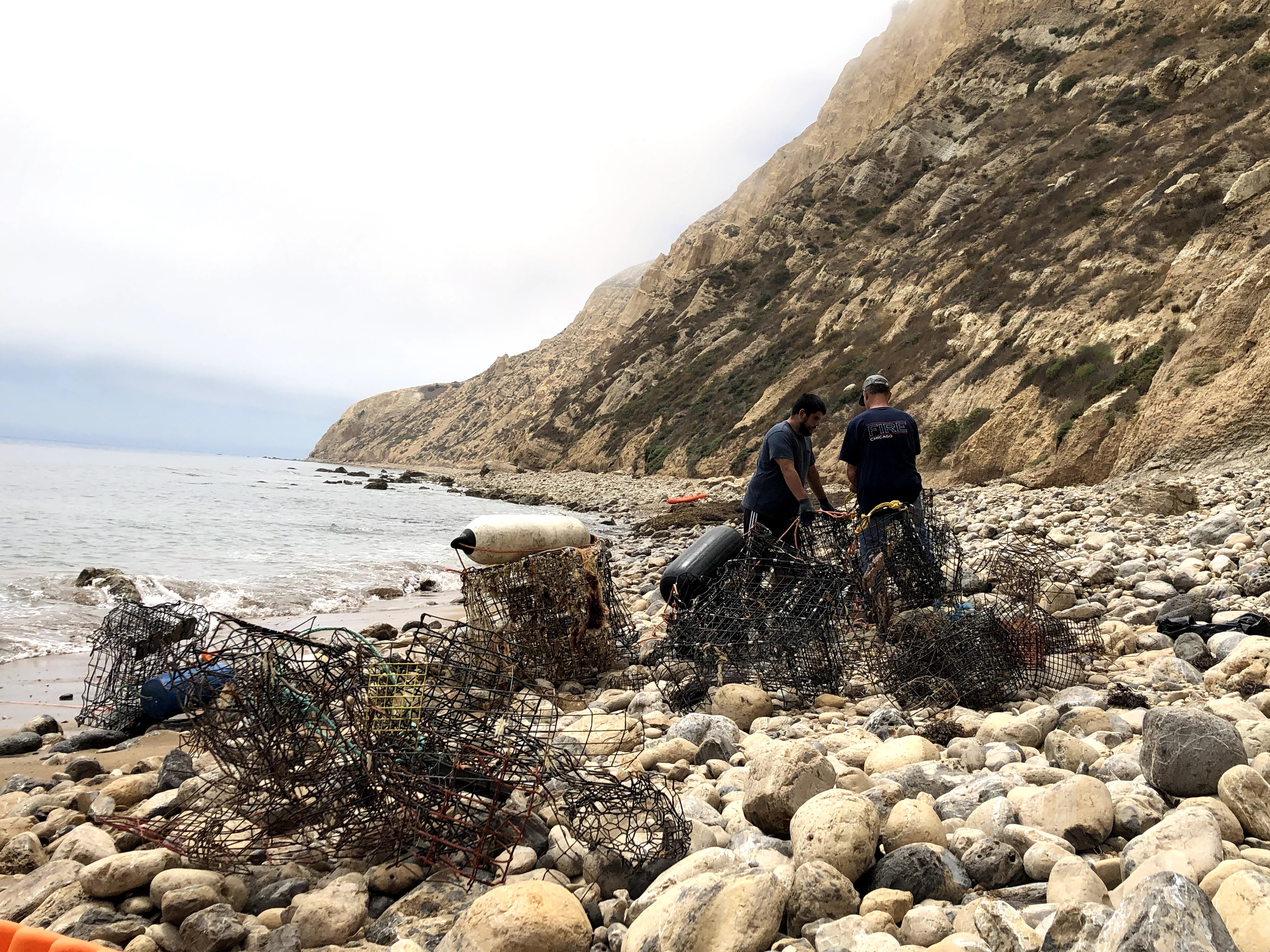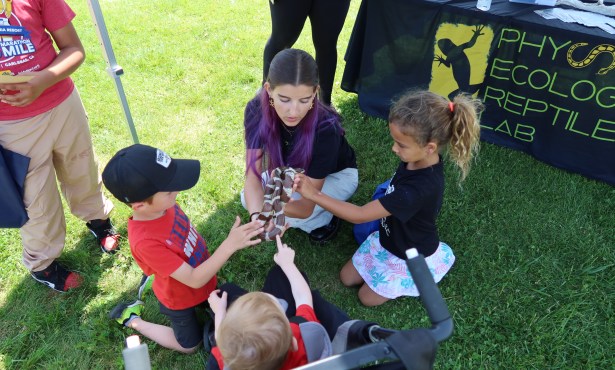Clean Seas Program Rids Santa Cruz Island of Thousands of Pounds of Debris
More Than 6,000 Pounds of Fishing Gear Washed Up on Shore Is Removed

The average beachgoer might consider it an inconvenience — albeit a needed one — to stop and pocket beach trash. Santa Cruz Island, however, provides another perspective. There, debris isn’t always so conveniently pocket-sized — instead, hunks of lost lobster traps wash ashore.
One hundred and thirty-one lost lobster traps made up the bulk of 6,440 pounds of debris collected at a cleanup on July 30-31 at Yellowbanks, a one-mile stretch of beach on the south shore of Santa Cruz Island. In collaboration with Santa Barbara Channelkeeper and local lobstermen, the National Marine Sanctuary Foundation (NMSF) spearheaded the effort using the Goal: Clean Seas program, which had removed 14,693 pounds of debris from the Florida Keys National Marine Sanctuary in 2018.
Get the top stories in your inbox by signing up for our daily newsletter, Indy Today.
Shannon Colbert, policy and conservation director at the Sanctuary Foundation, pointed to several factors explaining the prevalence of lobster traps and heavy fishing gear, which wash up more frequently on islands than on the mainland. The area around Yellow Banks has currents that push debris onto the beaches, an effect amplified by the expansion of fisheries over time.
“We want to see if there’s actually a significant shift in the traps and where they set them, versus where currents might accumulate lost traps,” Colbert said. “I think that’s an important part of why we try and engage the commercial lobstermen, so we can actually address … more preventative measures to look at how we can reduce trap loss.”
Partnering with lobstermen has immediate benefits as well: Local lobstermen Sam Shrout and Chris Voss provided a boon to the cleanup, using their boats’ hydraulic pulleys to remove the heaviest debris.
At 18 people, the team might have been small, but their work matters. The Channel Islands National Marine Sanctuary comprises 1,470 square miles of kelp forests, intertidal zones, and fishing grounds. “You have seals and sea lions; you have seabirds,” said Colbert. “With the lost fishing gear, we’re hoping to remove it so that it no longer poses a potential threat of entanglement to marine mammals or sea turtles.”
Another island cleanup is planned for September, in tandem with California Coastal Cleanup month. While the Yellow Banks effort yielded little to no COVID-related debris, such as facemasks and plastic food packaging, Colbert said the Sanctuary Foundation will be on the lookout for these items at subsequent sites. Comparison with debris data from previous years, she hopes, may reveal the impact of the pandemic on marine debris.
Debris data for this cleanup was recorded using the Marine Debris Tracker App. Cleanup data can be accessed here: marinedebris.engr.uga.edu/newmap.
Every day, the staff of the Santa Barbara Independent works hard to sort out truth from rumor and keep you informed of what’s happening across the entire Santa Barbara community. Now there’s a way to directly enable these efforts. Support the Independent by making a direct contribution or with a subscription to Indy+.



